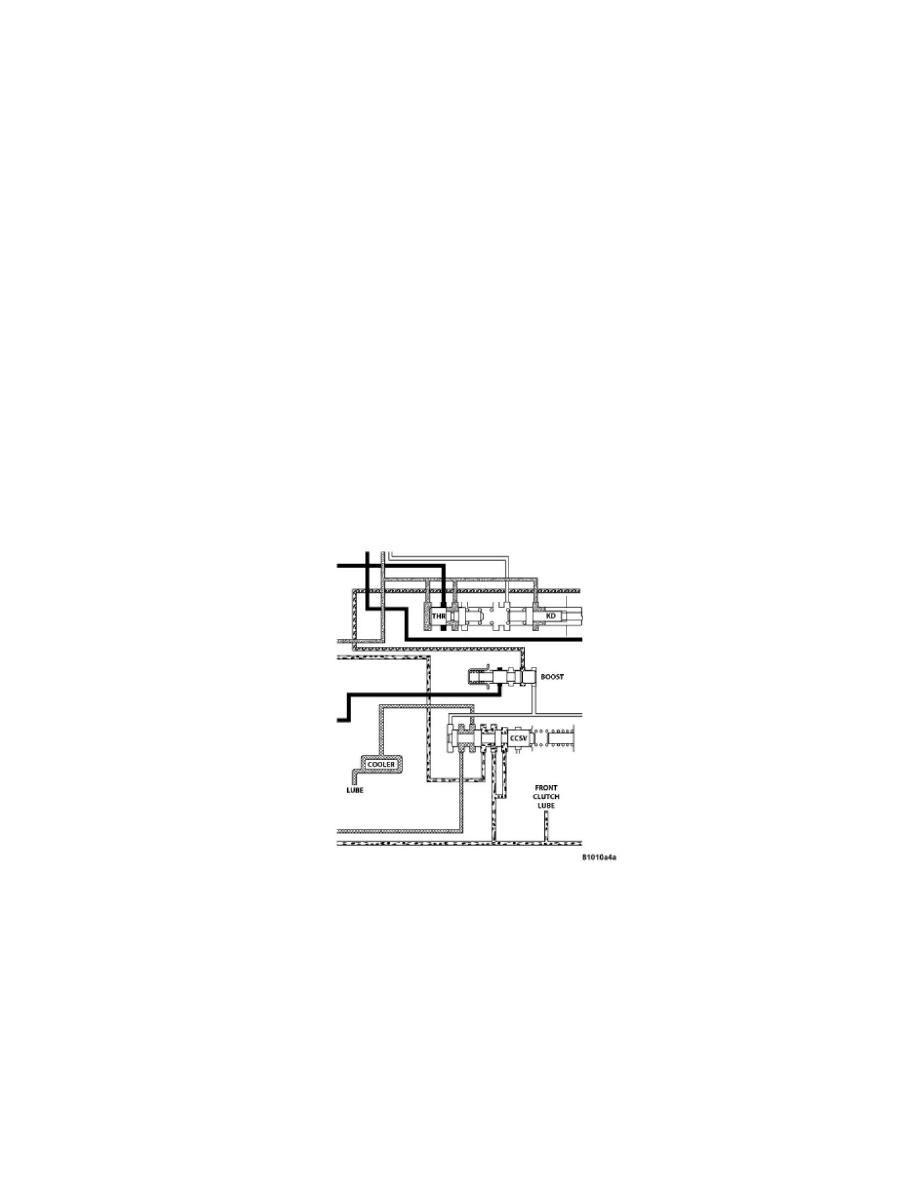RAM 1500 Truck 4WD V8-4.7L (2008)

Once the TCC control valve has moved to the right, line pressure is directed to the tip of the switch valve, forcing the valve to the right. The switch valve
now vents oil from the front of the piston in the torque converter, and supplies line pressure to the (rear) apply side of the torque converter piston. This
pressure differential causes the piston to apply against the friction material, cutting off any further flow of line pressure oil. After the switch valve is
shuttled right allowing line pressure to engage the TCC, torque converter pressure is directed past the switch valve into the transmission cooler and
lubrication circuits.
CONVERTER CLUTCH LOCK-UP VALVE
The torque converter clutch (TCC) lock-up valve controls the back (ON) side of the torque converter clutch. When the PCM energizes the TCC solenoid
to engage the converter clutch piston, pressure is applied to the TCC lock-up valve which moves to the right and applies pressure to the torque converter
clutch.
CONVERTER CLUTCH LOCK-UP TIMING VALVE
The torque converter clutch (TCC) lock-up timing valve is there to block any 4-3 downshift until the TCC is completely unlocked and the clutch is
disengaged.
SHUTTLE VALVE
The assembly is contained in a bore in the valve body above the shift valves. When the manual valve is positioned in the Drive range, throttle pressure
acts on the throttle plug of the shuttle valve to move it against a spring, increasing the spring force on the shuttle valve. During a part or full throttle 1-2
upshift, the throttle plug is bottomed by throttle pressure, holding the shuttle valve to the right against governor pressure, and opening a by-pass circuit.
The shuttle valve controls the quality of the kickdown shift by restricting the rate of fluid discharge from the front clutch and servo release circuits.
During a 3-2 kickdown, fluid discharges through the shuttle by-pass circuit. When the shuttle valve closes the by-pass circuit, fluid discharge is restricted
and controlled for the application of the front band. During a 2-3 "lift foot" upshift, the shuttle valve by-passes the restriction to allow full fluid flow
through the by-pass groove for a faster release of the band.
BOOST VALVE
Boost Valve Before Lock-up
The boost valve provides increased fluid apply pressure to the overdrive clutch during 3-4 upshifts, and when accelerating in fourth gear.
